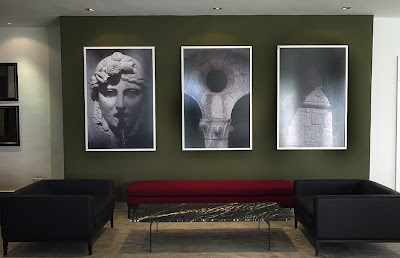"My first camera was a Minolta SR-T101. It came with a 55mm lens, which has a narrower depth of focus and angle of view than the 35mm lenses that many of the other students at the San Francisco Art Institute were using. I couldn't afford a new lens, so I worked with this lens for about a year. It was a good learning experience. You can be sloppy with a wide-angle lens. The 55mm made me very aware of what I was putting in the frame. It was good discipline in learning how to see and compose. The 55mm had very little distortion. If I wanted a close-up picture I stepped up to the subject and if I wanted a wider shot I stepped back. After that first year, when I decided that I was serious about photography, I reluctantly sold the Minolta and got a Nikon F with a 35mm lens. The other students at the school were using a variety of cameras, but the most common were Nikons and Leicas."
Annie Leibovitz At Work, Random House 2008
I have often tried to recall what my first camera was. I think it was a Kodak Instamatic which took 126 cartridge films, and rotating flashcubes. I often looked at the ads in the magazines during the mid 70s in awe, at the latest Nikon Fs, and the magnificent Olympus OM1 cameras and could not understand how SLRs worked. I had no concept of the internal prisms that bend light, and the interchangeable lenses, the multi-patterned metering systems, depth of field previews etc. It was all technically impossible as far as I was concerned. I was happy with my little Instamatic.
My next camera was a Yashica MG1 which was a might good camera! It was a manual focus rangefinder, with metal construction and an electronic leaf shutter. I really loved the way it operated, and was a 'serious' after the plasticky Kodak. I realised that making good clear photographs involved more than just pressing the shutter. You had to focus and set the exposure at the same time. No more Cloudy of Sunny settings. Things were getting technical, like F-stops, with unimaginable numbers, F1.8, 5.6, 11, 16 etc...It made no sense at all, but it felt good. Distance marking on the lens barrel was easy to decipher, but F-Stops?!
Several years later, my father passed me a vintage 1960s Zeiss Ikonta, which had a folding bellows lens and a knurled knob for advancing 120 film. It was a beaut. Everything about it harks back to a time of elegance in design, form and function. Precision built.
It was useless. I could not make a decent photograph with it. In fact, I don't think I ever attempted. The viewfinder had fungus haze. The shutter was inaccurate. I still have it, the Ikonta. It sits longingly on a shelf as a showpiece of what it was once, a picture making machine. The shutter has now frozen due to years of inactivity. The knurled knob is stiff for lack of lubrication, and the rangefinder mechanism is all but jammed.
As far I I'm concerned, these were REAL cameras. The photographer had to work at camera handling, setting exposure and focus in the fly. None of those plastic electronic black boxes manufacturers churned out one a month under a different guise in the mid 80-to 90s. We are so spoilt today. Auto focus, auto exposure, face detection, smile detection, even pet detection!
Horrors!

.jpg)








.jpg)














